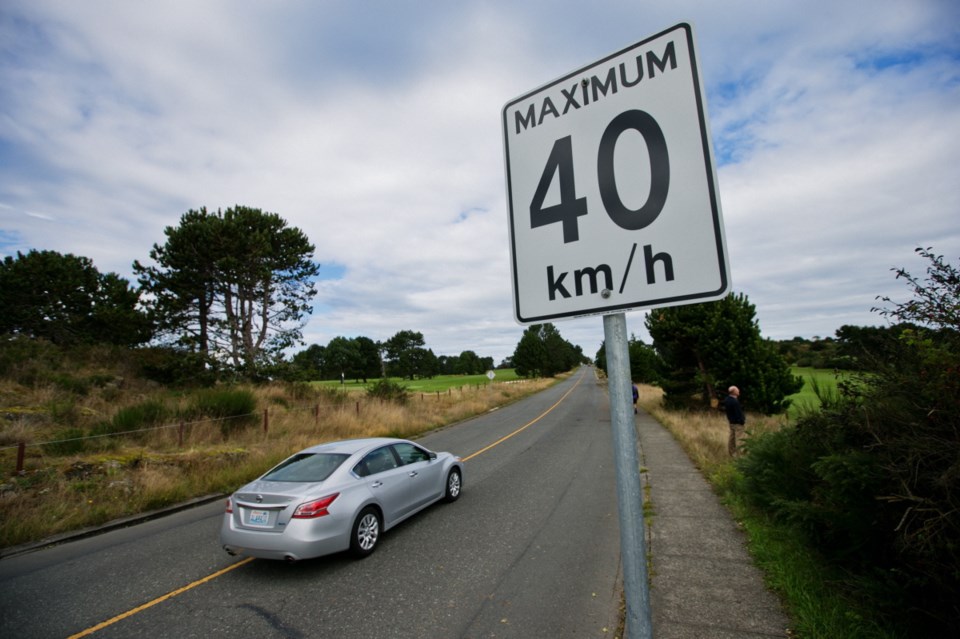 Every weekday, before work, I walk my 11-year-old daughter and her friend to school, 35 minutes each way. Why do I do this? Many reasons: I want the exercise for all of us. Driving to school in morning traffic makes me swear a lot. It’s a chance to have a conversation.
Every weekday, before work, I walk my 11-year-old daughter and her friend to school, 35 minutes each way. Why do I do this? Many reasons: I want the exercise for all of us. Driving to school in morning traffic makes me swear a lot. It’s a chance to have a conversation.
But there is another reason: I don’t want you to kill them.
That’s right, you: the typical driver. I’m sure you’re a very nice person, but if you’re like most people, you probably drive too fast most of the time — on residential side streets, in school zones, in parking lots.
I don’t mean too fast in the legal-speed-limit sense. I mean too fast in the moral, safety sense. If you’re doing 50 on a narrow, windy side street, you’re going too fast, even if the law doesn’t say so.
All ages, genders, socioeconomic groups speed casually. Most of us are unconscious of our speed, which has a lot to do with how well vehicles have become engineered for performance over the past few decades. Combine that with all the distracting technology packed into vehicles and you have a highly efficient killing and maiming machine.
The only thing standing in the way is the driver. And the fundamental problem with drivers is that we are human, and thus flawed. We make mistakes. We text behind the wheel. We fail to notice what’s going on around us because we’re having a hands-free cellphone conversation.
The same goes for pedestrians. But when pedestrians make mistakes, they can die. When drivers make mistakes, they can kill people — especially at higher speeds.
In its 2004 report on Road Traffic Injury Prevention, the World Health Organization wrote: “It is clear that a system that combines human beings with fast-moving, heavy machines will be very unstable. It is sufficient for a driver of a vehicle to lose control for just a fraction of a second for a human tragedy to occur. The road transport system should therefore be able to take account of human failings and absorb errors in such a way as to avoid deaths and serious injuries.”
Victoria Mayor Lisa Helps has pledged to reduce speed limits to 30 km/h on low-traffic neighbourhood streets, eliciting much harrumphing from her critics.
Yet it’s one of the few cheap, effective tools cities have at their disposal to try to make a dent in the number of pedestrian deaths.
Another is education, but so far, it has been primarily directed at pedestrians. (“You might be right, but don’t be dead right,” hammered the TV last fall, until I was ready to pelt the screen with my reflective arm bands.)
While pedestrians might have more skin in the game, they aren’t the problem. The problem is driver speed, and the only effect of the one-sided messaging is to ensure it continues unabated.
Love 30 Canada is a group formed in 2016 with the aim of reducing speed limits on urban and residential streets, based on the successful U.K. campaign 20’s Plenty for Us (20 mph). Love 30’s website notes that the U.K. has the fourth lowest traffic-death rate in the world, after Sweden, but Canada is in a “pitiful” 27th place.
It cites World Health Organization statistics that show a pedestrian struck by a vehicle going 30 km/h has a nine in 10 chance of survival. At 40 km/h, that drops to seven in 10, and by 50 km/h, it’s 1.5 in 10. By 60 to 70 km/h, it’s virtually nil. It’s all about reaction time and stopping distance; the first stays the same, but the second gets longer as speed increases.
Love 30 Canada’s founding director, Graham Larkin, told me he’s a firm believer in implementing safer 30 km/h limits on urban streets without any added enforcement or physical calming.
Larkin reasons that some people will follow the new limit, thereby preventing others from speeding, and everyone will likely drive a little more slowly than before, a change that would lead to a dramatic reduction in pedestrian deaths and serious injury.
“If, after setting safe limits, the city were to feel the need for further speed controls, then physical calming — i.e. measures like speed bumps, lane narrowing or raised pedestrian crossings — would be preferable to costly, cumbersome and potentially biased police presence,” he wrote in an email. “As would automatic speed enforcement — i.e. safety cameras, which can be used to deter bad drivers and reward good ones.”
Critics of the 30 km/h limit on low-traffic neighbourhood streets include a Times Colonist letter-writer who argued that there is risk in everything we do, and we should just accept it. To which I say: Nope. Sorry, Dude. I’m not prepared to accept a risk that can easily be mitigated at little expense to the typical driver except in the form of the most modest inconvenience. How many children’s lives are worth your ability to save a minute or two on your commute to the office — or race to make your tee time?
A year ago, in Gordon Head, 11-year-old Leila Bui crossed Ash Road — a street with chronic speeding problems — to catch a ride to school and was struck by an SUV in the crosswalk. She suffered a severe brain injury — her life has changed forever, as has her family’s.
Humans will always make mistakes — pedestrians and drivers both. The rules of the road have to be designed so mistakes don’t turn into tragedies.



